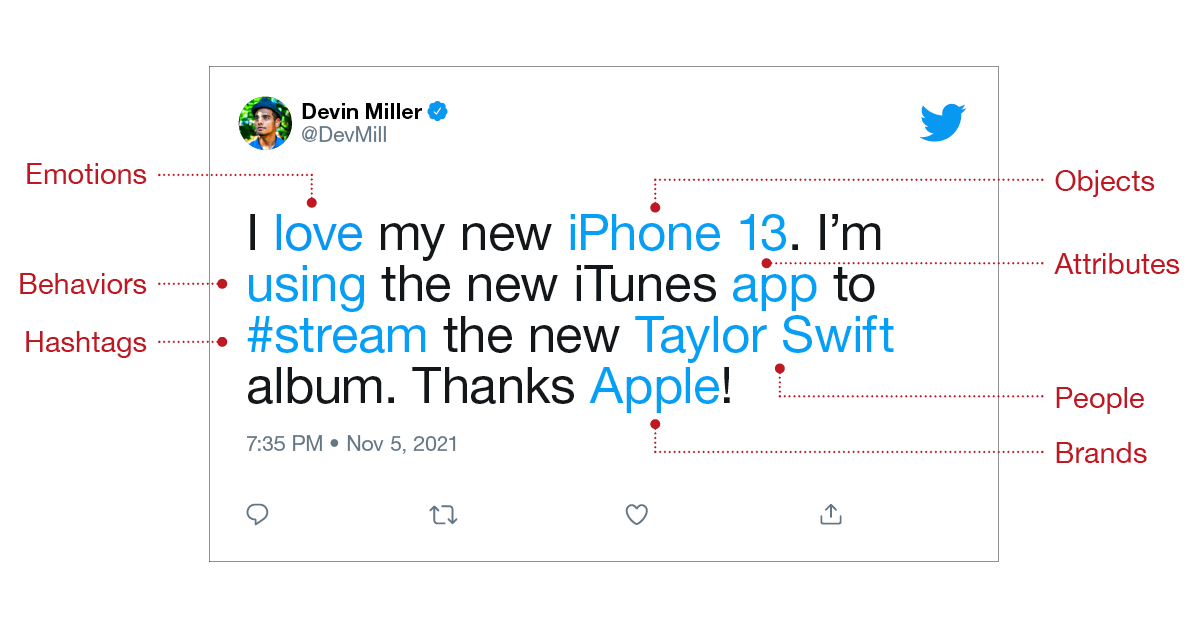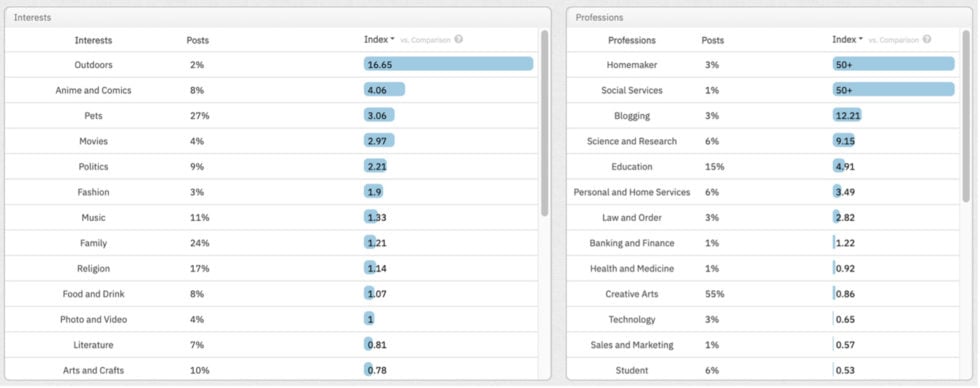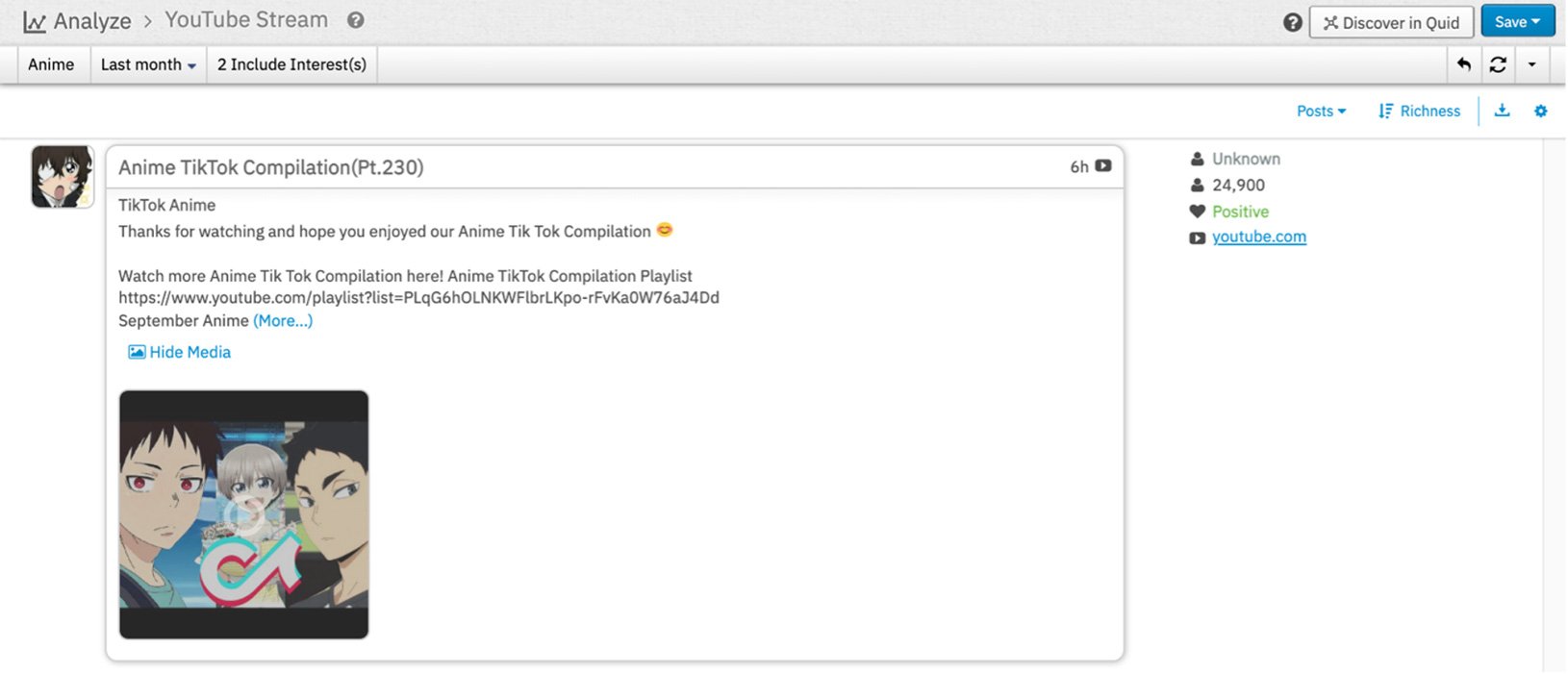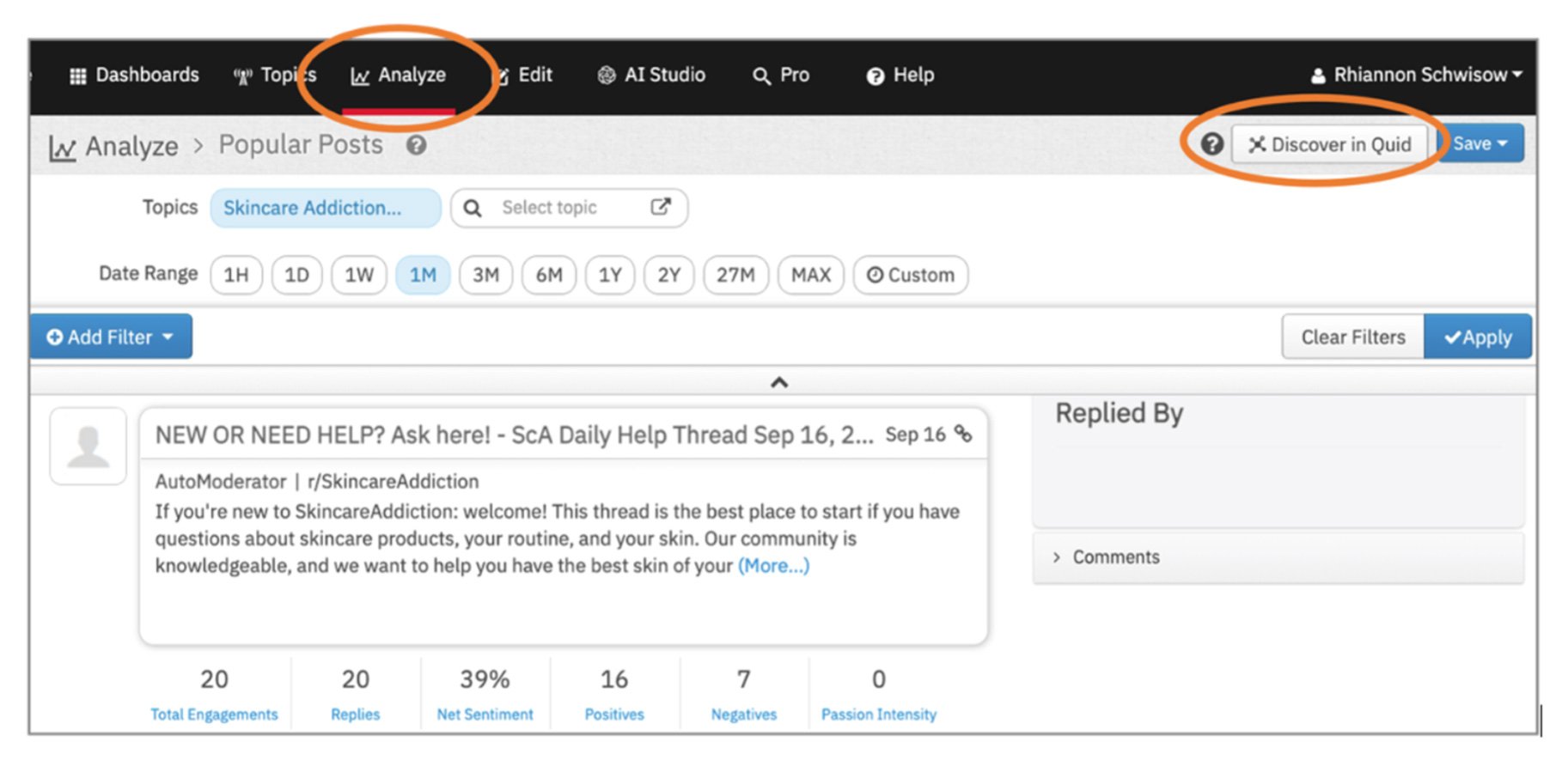Laurie P.

Blog Summary
This blog delves into how brands can enhance customer trust and loyalty by leveraging genuine consumer insights to refine their messaging and marketing strategies.
Key Points Overview
Top Takeaways
Conclusion
Understanding and utilizing consumer insights allows brands to not just react to market changes, but anticipate and adapt to them, ensuring relevance and strengthening customer relationships in a highly competitive environment.
In today’s crowded marketplace, consumers aren’t short on brand choices—but they are short on trust. Traditional marketing no longer holds the sway it once did; instead, people turn to peer recommendations, online reviews, and cultural sentiment to guide their decisions. That means brand loyalty is fragile, and attention is harder than ever to earn.
For marketers, that presents a challenge—but also an opportunity. The brands breaking through are those that understand not just what their consumers buy, but why they buy. That understanding comes from one thing: consumer insights.
Consumer insights
go beyond sales numbers and review counts. They capture the full picture of your audience—what they care about, how they behave, and what they expect. When powered by the right data and analytics, consumer insights help brands craft messaging that builds trust, strengthens relevance, and fuels long-term connection.
At Quid, we believe great marketing starts with deep audience understanding. In this guide, we’ll explore:
What consumer insights are (and what they’re not)
How to turn consumer insights into high-impact marketing strategies
What to look for in analytics tools that fuel actionable insights
Plus, we’ll break down real-world trends that show how consumer behavior is shifting—and how top brands are staying ahead using smarter insights.
Let’s start with the foundation: what exactly are consumer insights, and why do they matter more now than ever?
At their core, consumer insights are actionable understandings about your audience—drawn from data, shaped by context, and ready to inform strategy. They go far beyond demographic breakdowns or sales reports. True consumer insights reveal the motivations, attitudes, behaviors, and preferences that drive purchasing decisions.
Think of them as the “why” behind the “what.” It’s one thing to know that your sales dipped in Q3. It’s another to know that a key competitor launched a product aligned to a growing trend your brand missed. That level of depth requires data—and the ability to interpret it in context.
Not all data is insightful, and not all insights are actionable. To qualify as a true consumer insight, it must:
Be based on real-time, multi-source data (not just isolated survey responses or historical sales)
Provide context behind consumer behavior—what’s driving it, influencing it, or changing it
Lead to a specific business action: adjusting a message, launching a campaign, refining a product, or shifting strategy
Modern consumer insights draw from a wide range of sources:
Social media and online forums (revealing real-time sentiment and conversation trends)
Review sites and ratings (highlighting gaps in satisfaction or unmet expectations)
Search and web behavior (showing consumer intent)
Internal customer data (support tickets, NPS surveys, CRM records)
Market news, cultural moments, and competitive activity (providing environmental context)
With the right tools, these data points become a unified, multi-dimensional view of your consumer—so you’re not guessing what they want. You know.
In today’s fast-moving landscape, intuition isn’t enough. Brands need data-backed clarity to make confident decisions. Consumer insights give you that clarity—helping you understand not just how people feel about your brand, but where you stand in the market, how trends are evolving, and what actions will have the most impact.
Next, we’ll show you how to turn these insights into marketing strategies that resonate—and drive results.
Great marketing starts with great understanding—and that means knowing how to gather and analyze consumer insights effectively. But in a world overflowing with data, not all information is created equal. The most successful brands rely on structured methods, modern tools, and contextual analysis to turn raw consumer signals into clear business action.
Before you even look at data, define what you need to know:
What motivates your target customers to choose your product—or your competitor’s?
What trends are emerging in your category that could reshape expectations?
Where are you losing customer trust or attention?
The goal isn’t just to collect information—it’s to solve business challenges. That starts with asking strategic questions that guide your data exploration.
Robust consumer insights are built on diverse data. Leading brands pull from:
Social listening: Real-time conversations across platforms like TikTok, Reddit, and Instagram reveal what people care about right now
Review and ratings analysis: Unfiltered opinions help pinpoint what’s working (and what’s not)
Search and behavioral data: Understand how customers research and compare products
Surveys and internal feedback: NPS scores, support tickets, and feedback loops offer firsthand sentiment
Market and media trends: External signals (news, patents, competitor moves) provide vital context
Quid brings all of these sources together—so insights aren’t siloed, but synthesized into a clear narrative.
Traditional analytics tools often stop at reporting. But real consumer insight requires interpreting why patterns are happening and what they mean for your brand. That’s where modern AI-powered platforms—like Quid—come in.
Quid’s insight engine scans millions of data points in real time, detecting shifts in consumer behavior, surfacing emerging trends, and providing contextualized insights tailored to your business goals. Our AI doesn’t just tell you what’s trending—it explains why, and what you should do about it.
Once you have your insights, the final step is activation:
Refine messaging to reflect customer values and concerns
Align product and inventory decisions with emerging consumer demand
Craft marketing campaigns that speak to cultural moments and behavioral shifts
Identify unmet needs that open the door for innovation or repositioning
It’s this step—insight to action—that separates informed brands from reactive ones. With the right infrastructure and support, your team can move from analysis to execution faster and more confidently.
At the heart of today’s most powerful consumer insights platforms is natural language processing (NLP)—a form of artificial intelligence that analyzes how people communicate in their own words across digital platforms.
Instead of relying solely on structured data like surveys or ratings, NLP allows brands to tap into the unfiltered voice of the customer. It scans millions of online conversations—from social media posts and product reviews to forums and blogs—then interprets not just what’s being said, but how people feel and what they mean.
NLP transforms unstructured language into structured intelligence. Here’s how:
Detects sentiment: NLP assigns emotional values to words and phrases, gauging whether consumers feel positively, negatively, or neutrally about a brand, product, or issue.
Identifies topics and entities: It captures brand mentions, product features, competitors, and contextual keywords.
Uncovers deeper themes: NLP detects emerging patterns, from shifting consumer priorities to cultural tensions influencing purchase decisions.
But NLP goes far beyond basic sentiment analysis.
Modern NLP tools—especially when combined with advanced analytics—surface the “why” behind sentiment. For example:
If customer sentiment around a product drops, NLP can highlight whether it’s due to quality concerns, pricing, or a competitor’s innovation.
If an influencer drives a spike in brand mentions, NLP can trace the narrative back to specific emotions or values consumers are resonating with.
This turns what might seem like noise—millions of data points in natural language—into structured, actionable consumer insights.
With NLP, brands can move beyond manual monitoring and tap into what consumers are really saying at scale. This provides a real-time, always-on understanding of:
What matters most to your audience
Which brand perceptions are forming or shifting
Where your messaging may need to adapt
At Quid, we use NLP as part of a larger AI-powered system that brings together voice-of-the-customer data, trend analysis, and predictive modeling—so you don’t just know what consumers said. You know what to do next.
Check out the example of how natural language processing helps break down the tweet below:

This type of text categorization is a game-changer for finding consumer insights fast. With AI that uses NLP, like Quid, you can input any topic and comb the far reaches of the web to pull in every mention of it across news, blogs, and social media. Advanced models unlock the real key to consumer insights, associated consumer sentiment, which is crucial to finding what consumers love, hate, need, and want about both your products and your brand.
Consumers are complex—multifaceted in their interests, values, behaviors, and cultural influences. That’s why generic segmentation no longer works. To connect meaningfully, brands need to move beyond basic demographics and build custom audiences grounded in real, nuanced understanding.
This is where consumer insights come in.
By analyzing how consumers express themselves across channels—paired with market trends, behavioral data, and cultural context—brands can create dynamic audience segments that reflect not just who people are, but what matters to them.
Let’s say you’re targeting millennial pet owners. That audience is broad—but with the right consumer insight tools, you can narrow the focus based on shared interests, professions, values, or cultural references.
For example, when analyzing this group’s digital footprint, a surprising insight might emerge: 55% identify with creative professions and interests, from music and literature to anime and arts & crafts. That opens the door to messaging that speaks not just to pet ownership, but to a creative lifestyle. These are insights that don’t surface through traditional research alone.
With these layered attributes in hand, you can:
Shape campaigns that reflect specific passions or values within a segment
Create micro-targeted content—such as a video series that combines pet themes with anime-style storytelling
Identify the right channels and influencers, using data to reveal which platforms, authors, and communities your target audience trusts most
This isn’t guesswork. It’s the result of precise, data-backed audience modeling—powered by AI and grounded in context.
When your messaging reflects your audience’s real-world interests, behaviors, and values, it doesn’t feel like marketing. It feels personal, relevant, and authentic. That’s how you earn attention—and loyalty.
At Quid, our models are designed to detect these audience-level patterns at scale, giving your team the tools to act with precision. You’ll see not just what people are talking about, but how those conversations map to your business goals.

Let’s take an example. Say you’re targeting millennial pet owners. That’s a valid demographic—but it’s still generic. By applying consumer insight analysis, you can break this audience down based on the things that actually drive engagement:
What are their values and lifestyle signals?
What hobbies or cultural interests tie them together?
What content formats or platforms do they prefer?
In the example shown in the graphic, we filtered for millennial pet owners and uncovered a key insight: over 55% identify as creatives, and many express interest in categories like anime, music, arts & crafts, and literature.
Armed with this insight, your creative strategy shifts:
Instead of a broad campaign, you design a video series that blends pet content with a creative, anime-inspired style
Instead of generic placements, you target the specific channels, platforms, and creators this group engages with
You build messaging that speaks their language—not just as pet owners, but as members of a cultural niche
This is what it means to move from surface-level data to insight-driven action.
Once you’ve uncovered actionable consumer insights, the next step is activation—using those findings to create content, campaigns, and creative that land with precision.
Let’s continue with our earlier example: a campaign targeting millennial pet owners who also happen to be anime fans. Through insight analysis, you might surface trending hashtags within this niche—giving you a direct signal of the cultural language your audience is already engaging with.
From there, you could lead with video, today’s most engaging format. A scan of consumer behavior across platforms would reveal the types of anime-themed content this audience loves—such as TikTok compilations or YouTube remixes. These insights don’t just tell you what’s popular, they show you how your audience is interacting with it.

Now imagine you’re marketing a brand like Cat Wow cat food. Creating a TikTok Stitch that layers your brand message onto a trending anime moment isn’t just creative—it’s strategic. You already know the reference is culturally relevant, that short-form video fits the format your audience prefers, and that the barrier to entry is low. It’s a smart, insight-backed test of brand storytelling.
Of course, not every insight leads to a full campaign. Sometimes, even a small nod—a clever reference to a beloved anime character in your copy—can help your brand feel more connected and authentic to your audience.
The key takeaway? Without digging into the interests, behaviors, and cultural context of your audience, this opportunity would’ve stayed hidden. Consumer insights don’t just support your strategy—they often become the strategy.
Insight without action is just noise. The real value of consumer insights lies in their ability to shape strategic decisions that drive measurable impact—from stronger messaging to more relevant campaigns, smarter product positioning, and better customer experiences.
The top-performing brands aren’t just collecting data. They’re turning insight into execution—fast.
Once you have a clear understanding of your audience—what they care about, what influences them, where their needs are shifting—you can begin to:
Refine your messaging to mirror the tone, values, and vocabulary of your audience
Develop content strategies around the specific themes and cultural references driving engagement
Identify whitespace opportunities—gaps in the market where your brand can lead
Prioritize marketing investments around high-impact channels, creators, or subsegments
Adapt faster when consumer sentiment or behavior changes
These aren’t abstract ideas—they’re direct pathways to revenue, loyalty, and differentiation.
When your marketing reflects what people actually care about—in their words, in their world—it breaks through the noise. And when your strategy is powered by always-on consumer intelligence, you’re not guessing. You’re leading.
How consumers perceive your brand impacts everything—from reputation to revenue. Consumer insights reveal how sentiment is shifting, what’s driving those perceptions, and where your brand stands compared to competitors. Establishing key benchmarks allows you to identify strengths, spot early signs of brand erosion, and shape messaging that reinforces trust and credibility.
For example, if consumers are expressing frustration with your customer service, you can trace the issue to specific interactions, collaborate with internal teams to resolve it, and update your communications to reflect improvements—restoring confidence and reinforcing brand values.
Understanding the customer journey means more than tracking conversions. Consumer insights provide a window into how people move from discovery to loyalty—what questions they’re asking, what influences their decisions, and where they experience friction.
By analyzing behavior and feedback across each stage—consideration, evaluation, purchase, post-purchase, and advocacy—marketers can uncover new opportunities to educate, convert, and retain customers with precision.
Effective segmentation starts with a deep understanding of your audience. Consumer insights go beyond surface-level demographics to reveal psychographics, values, emotions, lifestyle traits, and interests. By identifying who’s most engaged—and what’s driving their behavior—you can craft targeted messaging that resonates.
You’ll also uncover influential subgroups, new engagement channels, and cultural signals that shape how and where to show up. It’s audience analysis at the level today’s consumers demand.
Brand perception can shift in a matter of hours. That’s why real-time consumer insights are critical for identifying and managing emerging issues. Whether it’s a sudden spike in negative sentiment or a misstep gaining traction, insights help you understand the root cause, evaluate the context, and respond with speed and clarity.
With early indicators and directional feedback, you can shape the narrative before it escalates—protecting both your brand and your customer relationships.
Launching a product without insight is like flying blind. Consumer insights can guide every step—before, during, and after launch. By evaluating how previous launches performed and monitoring competitive reception, you can identify what resonates, what misses, and what opportunities exist to differentiate.
These insights also reveal where conversations are happening, what concerns are surfacing, and how to position your offering in a way that feels both relevant and timely.
Once a campaign is in-market, real-time consumer insights help you assess performance through the lens of audience perception—not just clicks or likes. If a message is underperforming or gaining unexpected traction with a new segment, you can adjust your strategy mid-flight.
This continuous feedback loop allows you to measure what truly matters—resonance, sentiment, engagement quality—and build smarter, sharper campaigns over time.
Understanding consumers today requires more than monitoring mentions or tracking sentiment. With behaviors, beliefs, and expectations changing rapidly, brands need tools that cut through noise and deliver insight—not just data.
But not all tools are created equal. If you're evaluating platforms to support your consumer insight strategy, here are the capabilities that matter most:
Great insights require a wide lens. Look for tools that go beyond social media to include forums, blogs, product reviews, search behavior, market news, and your own internal data. A more complete picture leads to more relevant decisions.
Raw sentiment scores aren’t enough. The right tools should explain why consumers feel the way they do—what themes, triggers, and cultural forces are shaping opinions. Insights are only useful if they include context.
In today’s fast-paced environment, timing is everything. Whether you’re launching a product or managing a reputational risk, you need tools that detect shifts as they happen—not weeks later.
You need to trust your insights. Make sure the tools you choose allow you to drill down to the source—so you can validate the data behind the dashboards, understand the nuance, and speak confidently to stakeholders.
The best insights drive decisions. Seek platforms that move beyond monitoring to guide action: which audiences to prioritize, what messages to refine, where to activate next. Data is only valuable if it’s clear what to do with it.

At Quid, we’ve built advanced analytics software that checks every one of these boxes—ingesting data from hundreds of millions of sources, analyzing behavior, emotion, and trend dynamics in real time, and surfacing clear, contextual insights.
But here’s what makes us different: we don’t just hand over the tools—we use them for you.
Our team of insight engineers, modelers, and strategists partner with you to deliver not just dashboards, but direction. We handle the complexity of analysis behind the scenes and deliver you only what matters:
What’s changing with your consumers
Why it matters to your brand
What actions you can take today to drive impact
We combine the power of our technology with the precision of human expertise—so you don’t have to build an analytics team or manage another platform. You get clear, confident answers—and results that move the needle.
Want to see how Quid delivers consumer insights
that lead to action? We’d be happy to walk you through how it works.